Null Wave Front and Ryu–Takayanagi Surface
Abstract
1. Introduction
2. Null Wave Front and RT Surface
2.1. Ryu–Takayanagi Surface
2.2. Null Rays and Wave Front
3. Null Wave Front and Extremal Surface
4. Flux Formula
5. Conclusions
Author Contributions
Funding
Acknowledgments
Conflicts of Interest
Appendix A. Massless Scalar Field in AdS Spacetimes
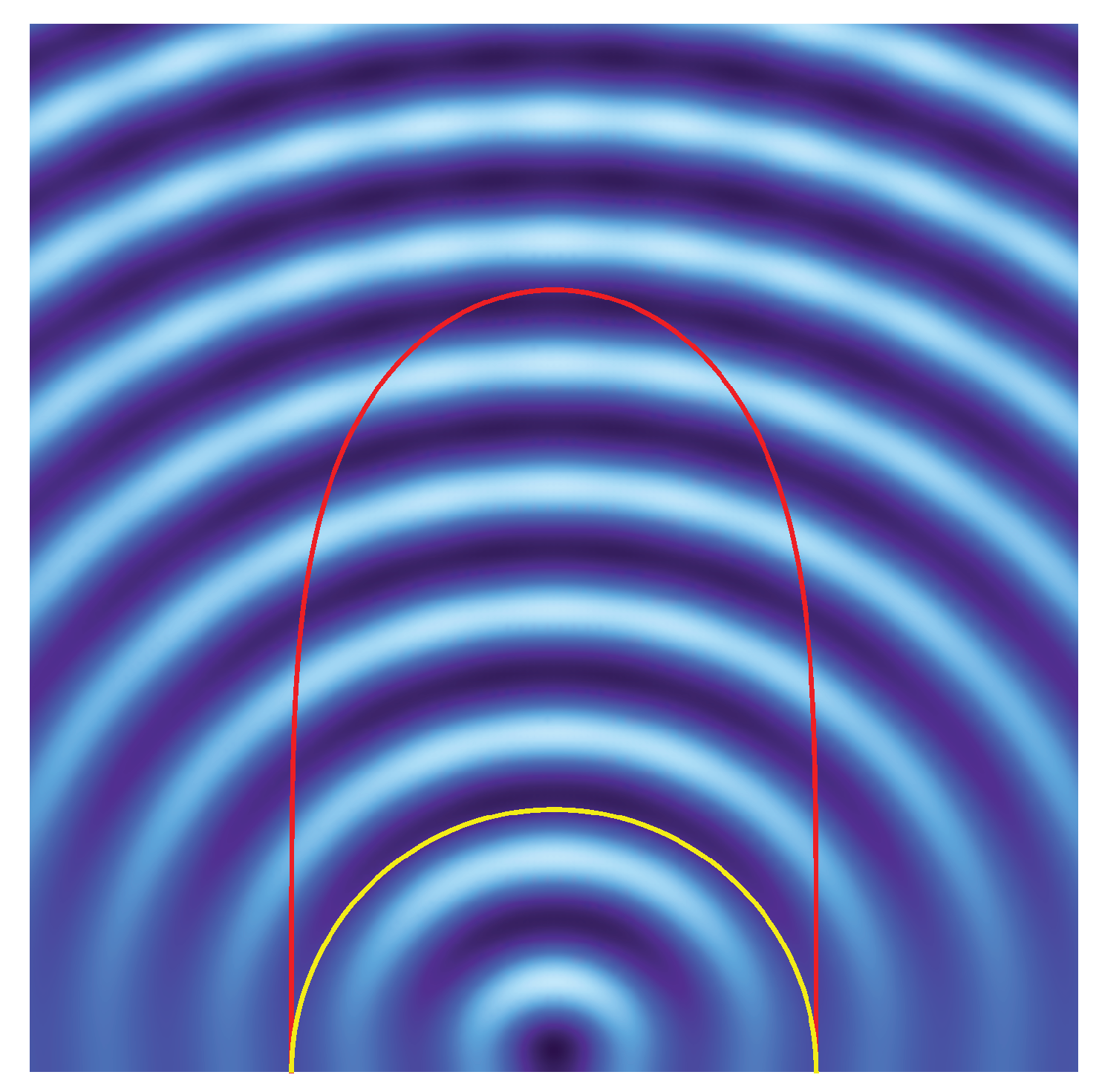
References
- Ryu, S.; Takayanagi, T. Holographic Derivation of Entanglement Entropy from the anti–de Sitter Space/Conformal Field Theory Correspondence. Phys. Rev. Lett. 2006, 96, 181602. [Google Scholar] [CrossRef]
- Ryu, S.; Takayanagi, T. Aspects of Holographic Entanglement Entropy. JHEP 2006, 8, 045. [Google Scholar] [CrossRef]
- Gubser, S.; Klebanov, I.; Polyakov, A. Gauge theory correlators from non-critical string theory. Phys. Lett. B 1998, 428, 105–114. [Google Scholar] [CrossRef]
- Witten, E. Anti de Sitter space and holography. Adv. Theor. Math. Phys. 1998, 2, 253–291. [Google Scholar] [CrossRef]
- Pastawski, F.; Yoshida, B.; Harlow, D.; Preskill, J. Holographic quantum error-correcting codes: Toy models for the bulk/boundary correspondence. JHEP 2015, 6, 149. [Google Scholar] [CrossRef]
- Swingle, B. Entanglement renormalization and holography. Phys. Rev. D 2012, 86, 065007. [Google Scholar] [CrossRef]
- Czech, B.; Karczmarek, J.L.; Nogueira, F.; Raamsdonk, M.V. The gravity dual of a density matrix. Class. Quantum Gravity 2012, 29, 155009. [Google Scholar] [CrossRef]
- Freedman, M.; Headrick, M. Bit threads and holographic entanglement. Commun. Math. Phys. 2017, 352, 407–438. [Google Scholar] [CrossRef]
- Agón, C.A.; Cáceres, E.; Pedraza, J.F. Bit threads, Einstein’s equations and bulk locality. arXiv 2020, arXiv:2007.07907. [Google Scholar]
- Hubeny, V.E.; Rangamani, M. Causal Holographic Information. JHEP 2012, 6, 114. [Google Scholar] [CrossRef]
- Fursaev, D.V. Proof of the holographic formula for entanglement entropy. JHEP 2006, 9, 018. [Google Scholar] [CrossRef]
- Lewkowycz, A.; Maldacena, J. Generalized gravitational entropy. JHEP 2013, 8, 090. [Google Scholar] [CrossRef]
- Bañados, M.; Teitelboim, C.; Zanelli, J. Black hole in three-dimensional spacetime. Phys. Rev. Lett. 1992, 69, 1849–1851. [Google Scholar] [CrossRef] [PubMed]
- Brown, J.D.; Henneaux, M. Central charges in the canonical realization of asymptotic symmetries: An example from three-dimensional gravity. Commun. Math. Phys. 1986, 104, 207–226. [Google Scholar] [CrossRef]
- Calabrese, P.; Cardy, J.L. Entanglement entropy and quantum field theory. J. Stat. Mech. 2004, 0406, P06002. [Google Scholar] [CrossRef]
- Calabrese, P.; Cardy, J. Entanglement entropy and conformal field theory. J. Phys. 2009, A42, 504005. [Google Scholar] [CrossRef]
- Kanai, K.; Nambu, Y. Viewing black holes by waves. Class. Quantum Gravity 2013, 30, 175002. [Google Scholar] [CrossRef]
- Nambu, Y.; Noda, S. Wave optics in black hole spacetimes: The Schwarzschild case. Class. Quantum Gravity 2016, 33, 075001. [Google Scholar] [CrossRef]
- Hashimoto, K.; Kinoshita, S.; Murata, K. Imaging black holes through the AdS/CFT correspondence. Phys. Rev. D 2020, 101, 66018. [Google Scholar] [CrossRef]
- Habeny, V.; Maxfield, H.; Rangamani, M.; Tonni, E. Holographic entanglement plateaux. JHEP 2013, 8, 092. [Google Scholar] [CrossRef]
- Freibogel, B.; Jefferson, R.; Mosk, L.K.B.; Yang, I.-S. Casting shadows on holographic reconstruction. Phys. Rev. D 2015, 91, 086013. [Google Scholar] [CrossRef]
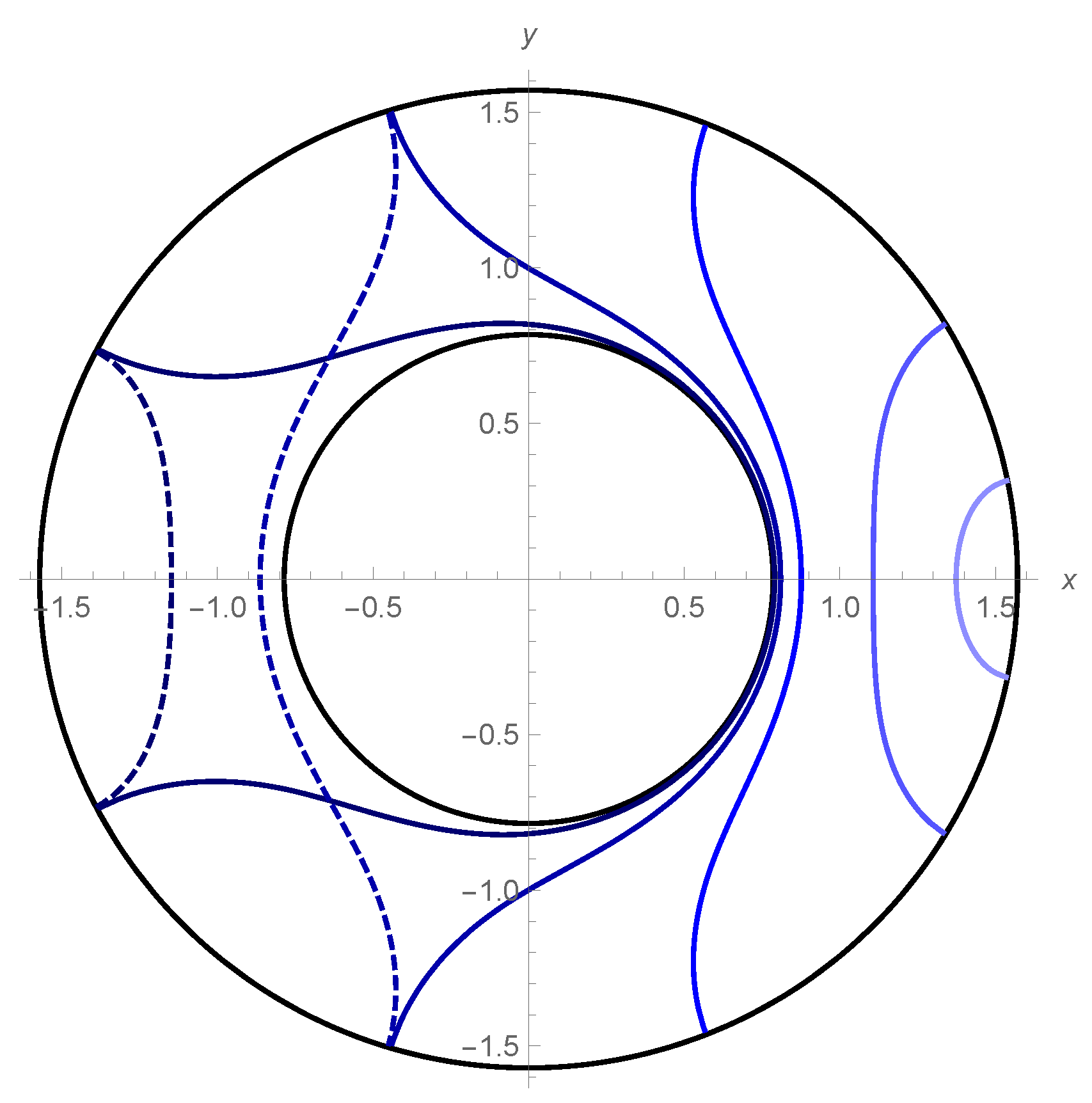
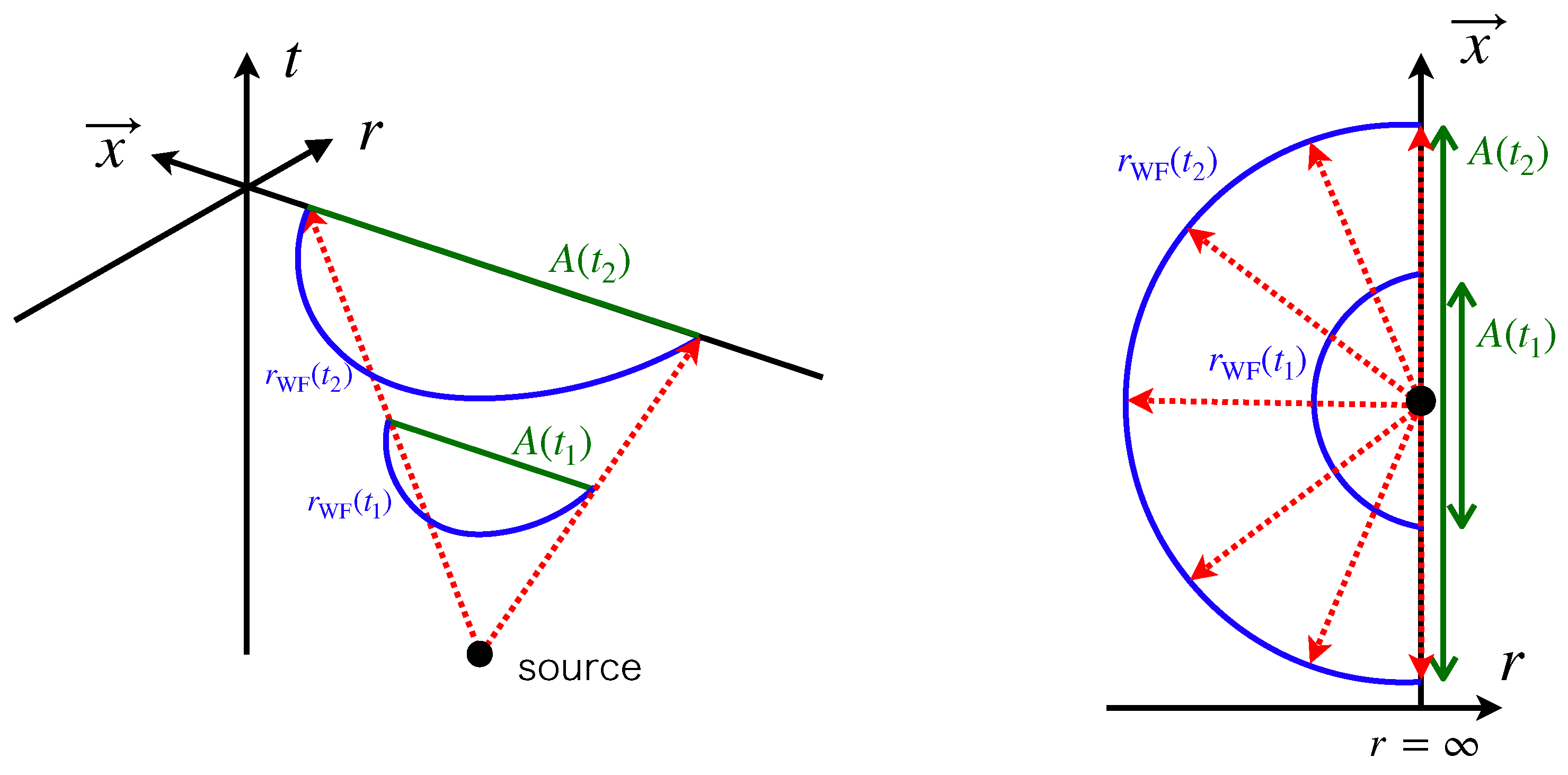
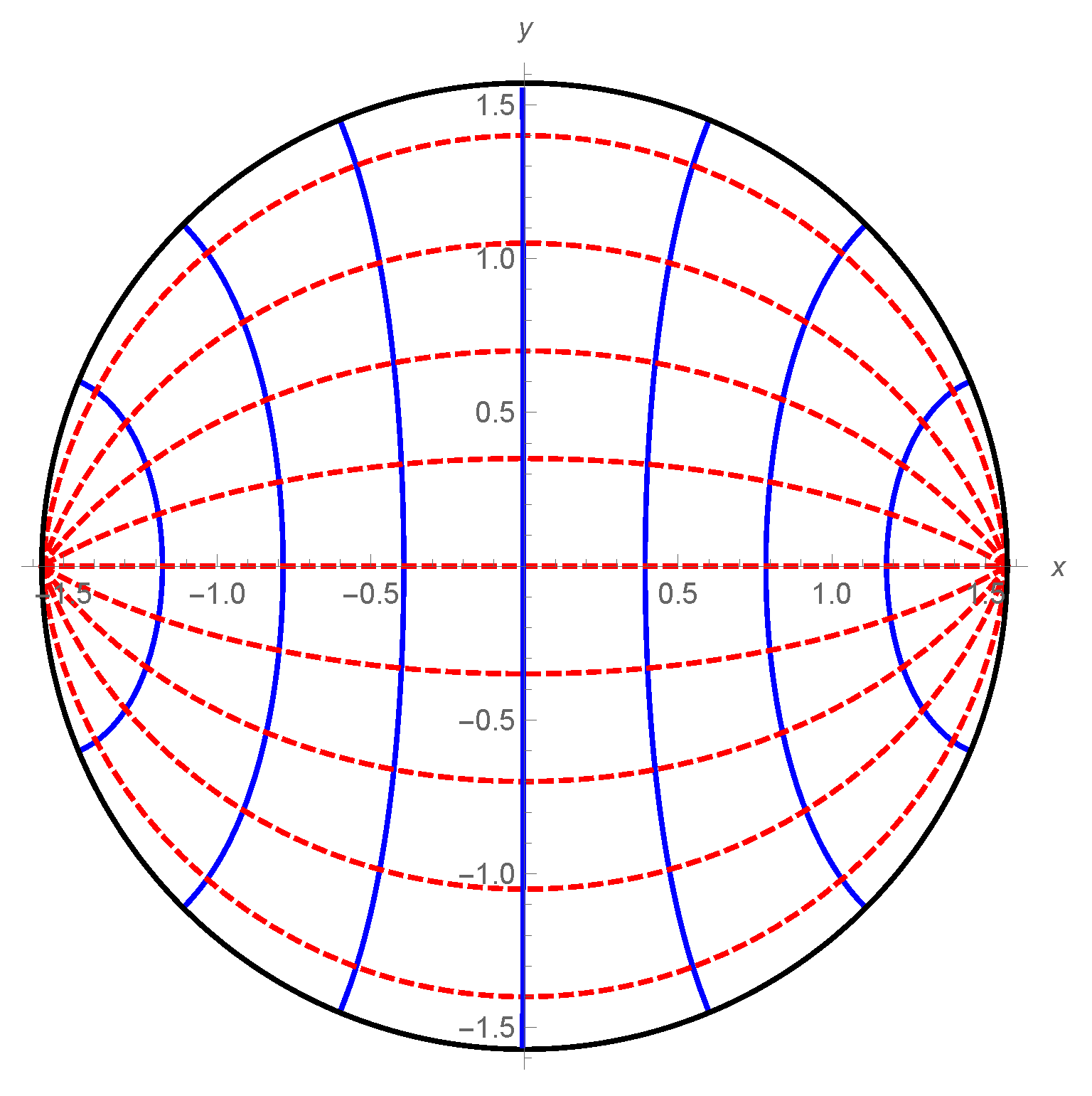
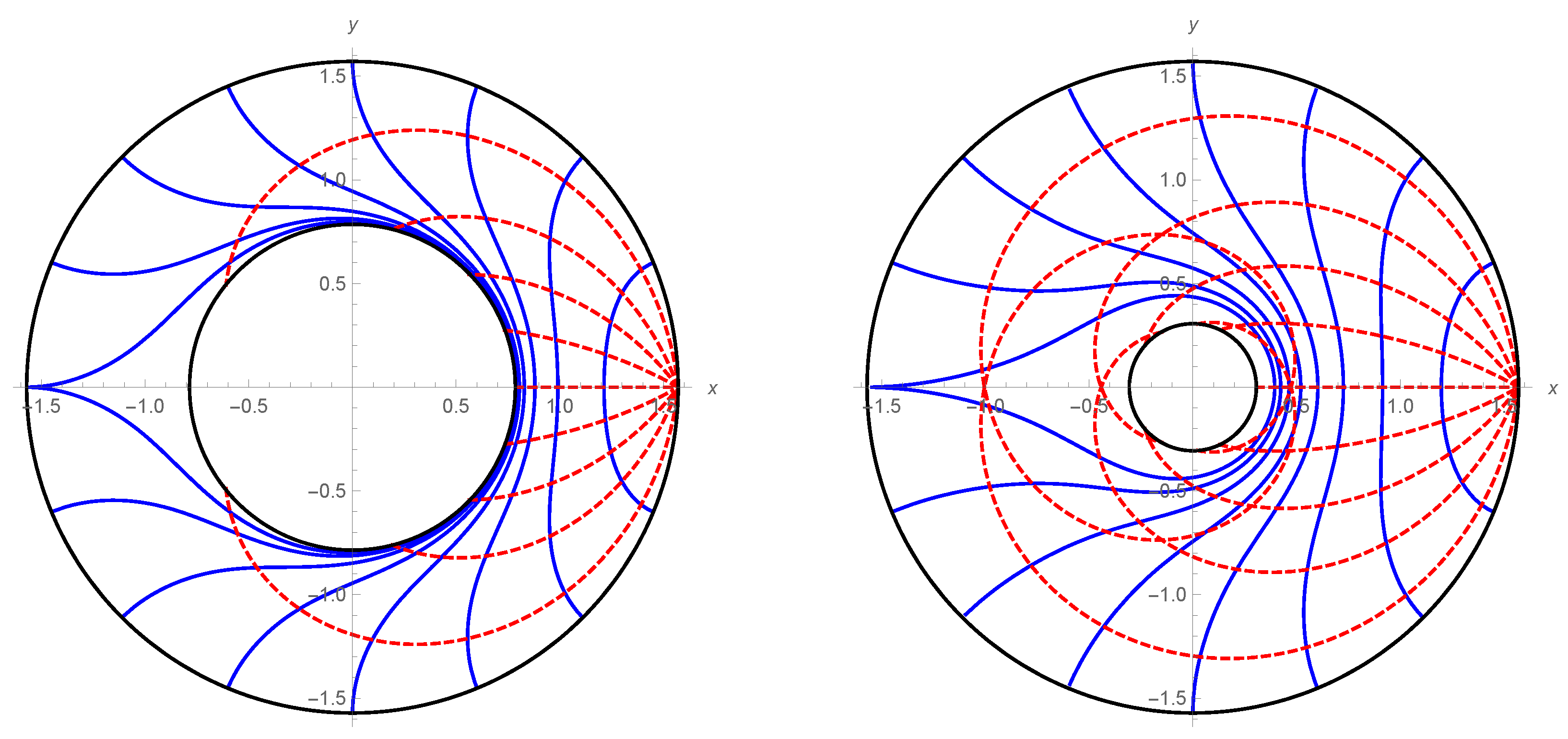

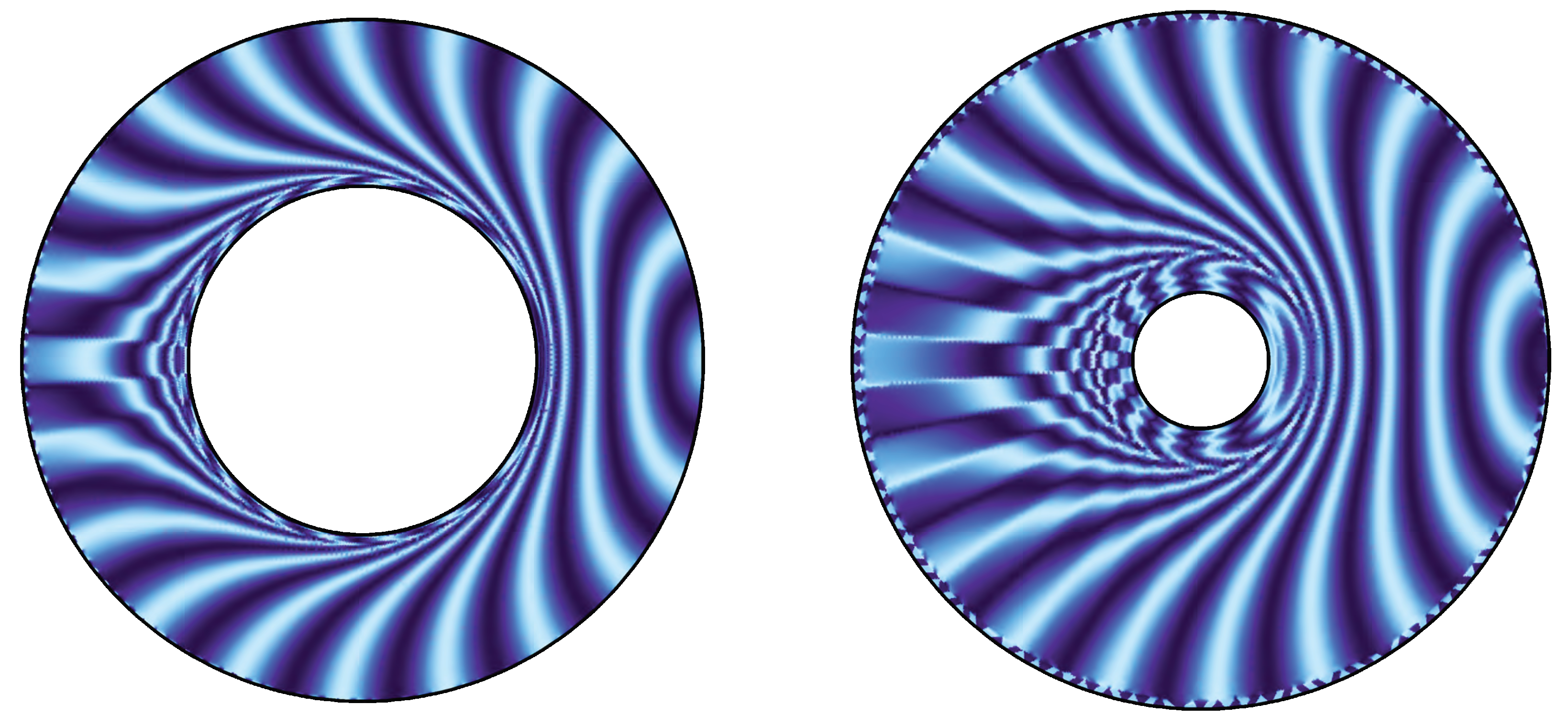
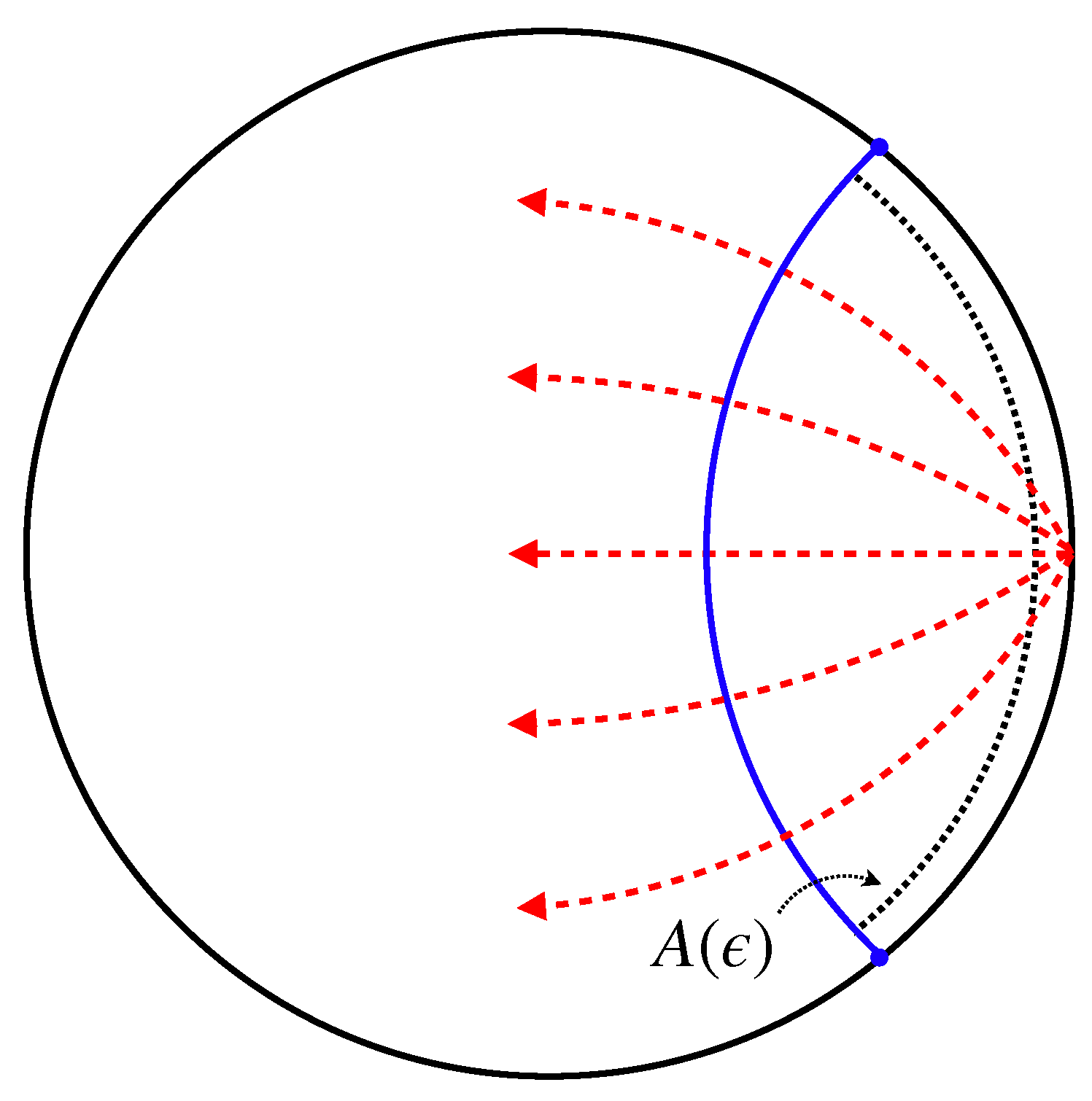
Publisher’s Note: MDPI stays neutral with regard to jurisdictional claims in published maps and institutional affiliations. |
© 2020 by the authors. Licensee MDPI, Basel, Switzerland. This article is an open access article distributed under the terms and conditions of the Creative Commons Attribution (CC BY) license (http://creativecommons.org/licenses/by/4.0/).
Share and Cite
Tsujimura, J.; Nambu, Y. Null Wave Front and Ryu–Takayanagi Surface. Entropy 2020, 22, 1297. https://doi.org/10.3390/e22111297
Tsujimura J, Nambu Y. Null Wave Front and Ryu–Takayanagi Surface. Entropy. 2020; 22(11):1297. https://doi.org/10.3390/e22111297
Chicago/Turabian StyleTsujimura, Jun, and Yasusada Nambu. 2020. "Null Wave Front and Ryu–Takayanagi Surface" Entropy 22, no. 11: 1297. https://doi.org/10.3390/e22111297
APA StyleTsujimura, J., & Nambu, Y. (2020). Null Wave Front and Ryu–Takayanagi Surface. Entropy, 22(11), 1297. https://doi.org/10.3390/e22111297




